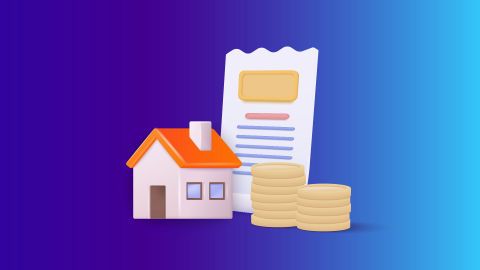When you take a home loan, you are required to submit various documents to the lender. These documents help the lender assess your eligibility and secure the loan. However, once the loan is sanctioned, the lender typically keeps the original property documents as collateral. If you wish to access these documents while repaying the loan, you may need to pay LOD charges.
What is the full form of LOD?
But what is LOD in home loan? LOD stands for list of documents, and these are the documents that the lender holds for the duration of the loan. In the case of a home loan, LOD charges refer to the fee you must pay if you wish to obtain copies of these original documents before the loan is fully repaid.
Why do lenders hold original documents?
When you take a home loan, the property documents, such as the sale deed, title deed, and agreement, are kept by the lender as collateral. This ensures that the lender or financial institution has a claim over the property in case the borrower defaults on the loan. These documents serve as proof that the lender has an interest in the property and can take legal action to recover the loan if necessary.
While you repay your home loan EMIs, you will not have access to the original documents unless you request them. To ensure that the lender's interest in the property is protected, the lender will keep these documents in their custody.
If you are planning to purchase a property and need financing with transparent documentation processes, Bajaj Finserv offers a streamlined approach to document handling and loan management. Check your eligibility today to see what loan amount you qualify for. You may already be eligible, find out by entering your mobile number and OTP.
How does LOD (list of documents) work in home loan?
The LOD in the context of home loans refers to the set of documents that the lender holds, which can include:
- Title deed
- Sale agreement
- Property tax receipts
- No-Objection Certificates (NOCs)
- Occupancy certificate
These documents are essential for establishing your ownership of the property and for securing the loan. As long as the loan is outstanding, these documents remain in the possession of the lender.
Documents typically mentioned in the LOD for home loans
A List of Documents (LOD) is essentially a detailed record of the papers you must provide when applying for a home loan. Lenders use this list to confirm your identity, income stability, and legal ownership of the property you wish to finance. It also helps them verify that the home is free from disputes and supported by valid paperwork. While each lender may have slight variations in requirements, most LODs revolve around a few essential categories. These include proof of property ownership, documents related to any ongoing loans on the same property, supporting valuation records, and formal documents that confirm compliance with tax and insurance obligations.
By maintaining a structured LOD, banks ensure that every crucial document has been received and checked before approving or transferring a home loan. Borrowers also benefit because it acts as a transparent checklist, preventing confusion later, especially when closing the loan. Below is a descriptive table outlining the common categories and documents typically found in a home loan LOD:
Document category |
LOD documents list |
Property ownership |
Registered Sale Deed (copy), Allotment or Possession Letter (if relevant), No Objection Certificate from the builder or housing society |
Loan details |
Current loan statement showing outstanding amount and loan-to-value details, Prepayment approval letter from the existing lender |
Property valuation |
Valuation report requested by the new lender (if required) |
Insurance |
Proof of active home insurance in the borrower’s name |
Tax documents |
Latest municipal Property Tax receipt |
What are LOD charges in home loans?
When you need to access the original property documents during the loan tenure, you may have to pay LOD charges. These charges are levied by the lender to cover the cost of retrieving, verifying, and providing copies of the original documents.
For example, if you need the original title deed or sale agreement to prove ownership of the property for a personal or legal matter, you will have to pay LOD charges. These charges can vary depending on the lender and the type of loan, but they are generally a one-time fee that can range from Rs. 500 to Rs. 5,000 or more, depending on the complexity and value of the documents.
Understanding all costs associated with your home loan is crucial for effective financial planning. When you apply for a home loan from Bajaj Finserv, you get complete transparency on all charges and fees upfront. Check your loan offers now to explore competitive interest rates starting at 7.45%* p.a You may already be eligible, find out by entering your mobile number and OTP.
When can you request the original documents?
You can request the original documents from the lender at any time during the repayment period of the home loan. However, this request will usually only be granted once you have completed all the necessary procedures and paid the LOD charges.
Here are some common reasons why you might need to request the original documents:
- Home loan balance transfer: If you are planning for a home loan balance transfer, the new lender will require the original property documents.
- Legal reasons: If you need the documents for any legal purposes, such as inheritance, dispute resolution, or property verification.
- Loan closure: If you have repaid your loan in full, you may need to obtain the original documents to complete the closure process.
Whether you are a first-time home buyer or considering a home loan balance transfer to benefit from better terms, Bajaj Finserv provides flexible options with tenure up to 32 years and no foreclosure charges for individual borrowers on floating rate loans. Check your eligibility to discover your loan options. You may already be eligible, find out by entering your mobile number and OTP.
Helpful resources and tips for home loan borrowers
How to request LOD documents from the lender?
If you want to get a copy of the original documents from the lender, here is what you need to do:
1. Write a request letter: Write a formal letter to your lender, requesting the original documents. Be sure to include your loan account number, property details, and the specific documents you need.
2. Pay the LOD charges: The lender will ask you to pay the LOD charges. The charges may vary, so it is important to clarify the cost upfront.
3. Submit required identification proof: You may be required to submit a government-issued ID (such as an Aadhaar card or passport) and a few other documents to confirm your identity.
4. Wait for processing: Once your request is processed, the lender will release the requested documents. Depending on the lender, this process could take anywhere from a few days to a couple of weeks.
What happens after you pay the LOD charges?
After you have paid the LOD charges, the lender will release the required documents to you, either as physical copies or as digital copies, depending on the lender’s policies. These documents are typically returned once you have fulfilled all your financial obligations.
If you are still in the process of repaying the loan, you may be asked to submit a security or guarantee to ensure that the documents are returned once the loan is fully paid off.
What happens when the loan is fully repaid?
Once the loan is fully repaid, the lender will release the original documents and return them to you without any charges. At this point, the lender no longer has a claim over the property, and you are free to use the documents as you wish. This is the point where you can take possession of all your property documents.
Home loans in different cities
Home loans designed for different professionals
|
|




